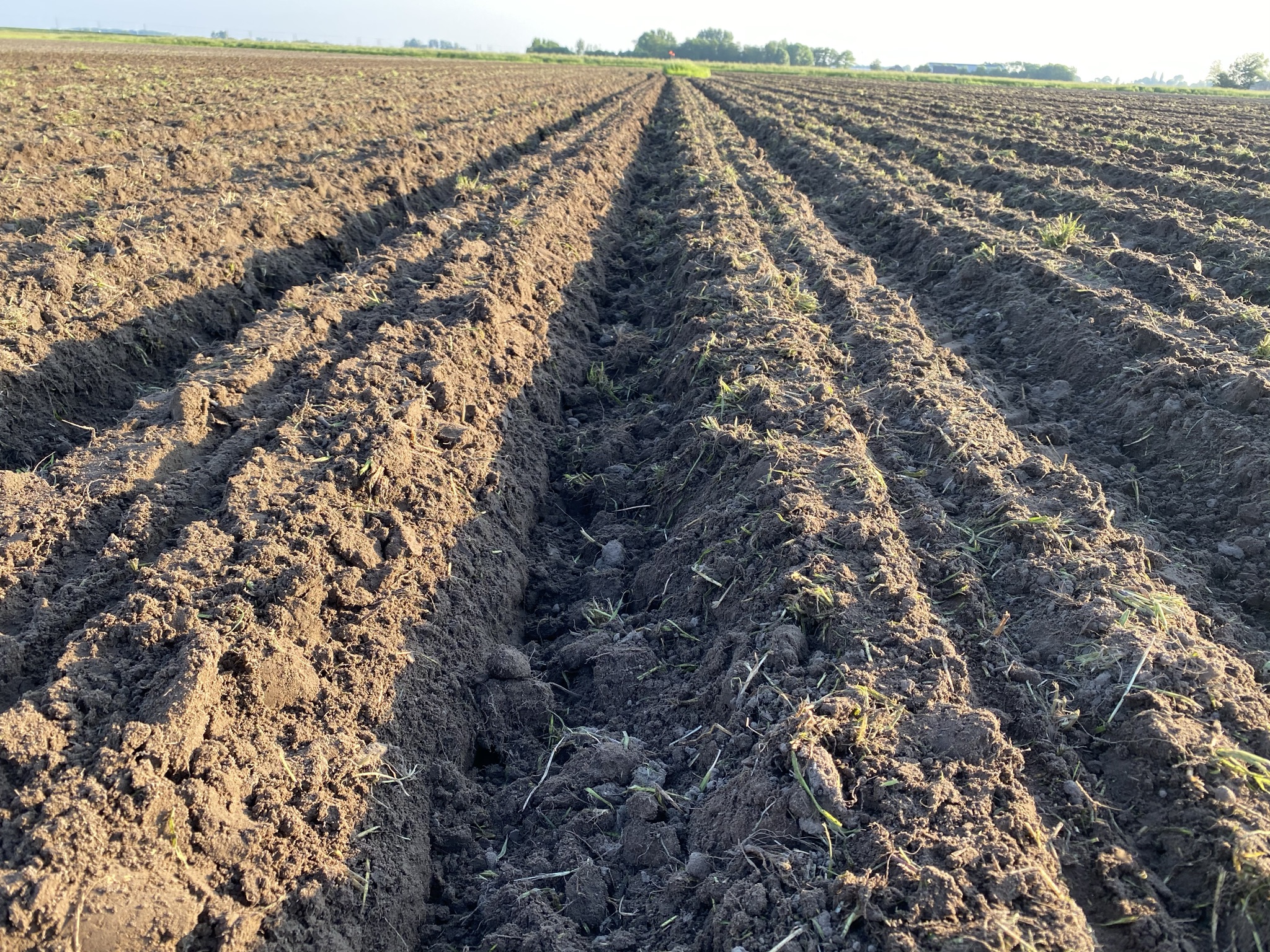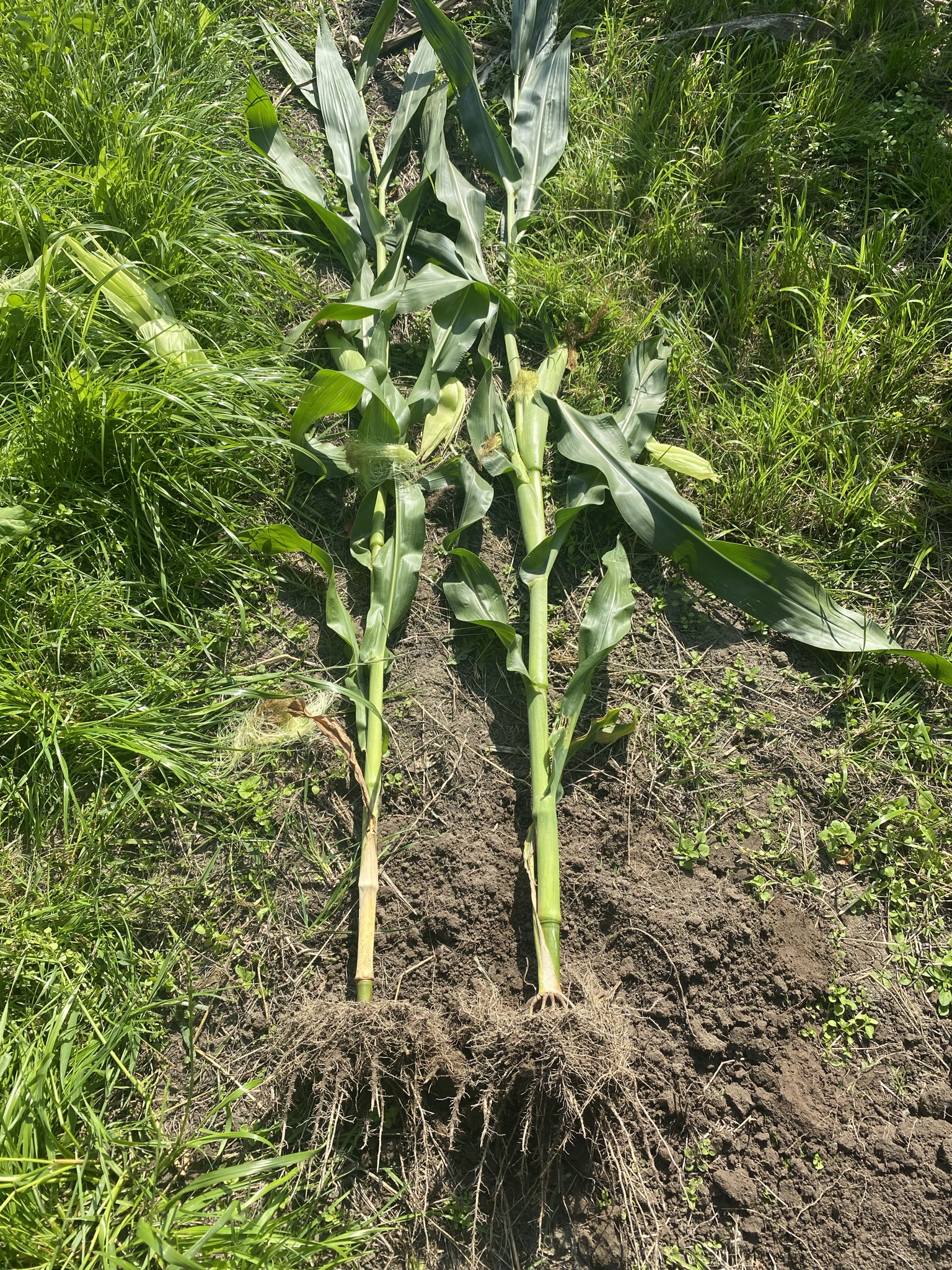
Maize is an important crop for livestock farming. Maize has stable and great nutritional values. This will stimulate the (milk) production and ultimately increase the operating results. The soil must perform at its best for maize cultivation to become future-proof. In other words, the soil is a star performer! To play as a star performer, the facilities and preconditions must be perfect. Grow the maize on ridges and allow for the soil to excel!
Make optimum use of available moisture
Moisture is important for maize to develop. The water supply is directly related to the production of the crop. Particularly while in bloom, maize needs sufficient moisture for a decent cob formation. Too little moisture results in an underdeveloped cob and therefore a low starch content.
As described in an earlier knowledge article, soil compaction in agriculture is a seriously underestimated issue. For an optimal yield, the soil must be suitable for developing roots and be able to absorb moisture. Any disturbing layers in the soil impede root development and the capillary action of the soil. Under such circumstances, the crop fails to absorb all necessary nutrients and moisture, which reduces the yield. There is also a greater risk of nutrients and crop protection agents leaching into the surface water.
Working with the Evers subsoiler for ridge cultivation eliminates existing soil compaction, exactly under the spot where the maize is going to grow (take a look at the video clip). In addition, the ridges provide a buffer zone for excess rainwater. As water follows the path of least resistance, it will flow to where a ridge cultivator has performed the deep tillage operation. This makes efficient use of the rainwater.
The effect of organic matter on the soil quality
Green manure and catch crops are becoming more and more important in the crop rotation plans. The build-up of potential organic matter has an important effect on the quality of the soil. Organic matter plays a crucial role in working with the Evers subsoiler for ridge cultivation.

Ridges with a fine structure and effective use of organic matter.
It is important to process the organic matter in the upper layer of the furrow. A disc harrow is very suitable for the pre-treatment. The same goes for injecting slurry. It should stay shallow under the surface. With the subsoiler for ridge cultivation the slurry and organic matter are mixed and incorporated in the ridge. In other words, everything is there where the maize plants will grow.
Phosphate is not a very mobile element in the soil. When the slurry is injected close to the roots, the young maize plant can effectively make use of it. Phosphate plays an important role in breathing and the energy supply of the maize plant. In springtime, phosphate is important for proper root development. The larger soil surface is an additional advantage of growing maize on ridges. As a result, the soil will warm up faster. This gives a more active soil life and an abundance of nutrients for the plants.
Some of the processes where organic matter has an effect and are important for 'Maize on ridges':

Left: conventionally sown maize. Right: maize sown on ridges
More efficient cultivation with a positive result
Maize on ridges results in vigorous plants and ensures a successful and reliable maize harvest. On the demonstration plot, the 'Maize on ridges' is well developed. Successful maize cultivation with:
A top performance of the soil! Assure your future-proof maize crops with the Evers subsoiler for ridge cultivation!
